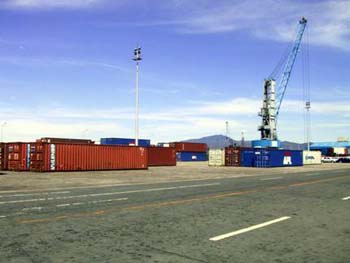MANILA, Philippines–President Aquino has declared the Port of Batangas and the Subic Bay Freeport as extensions of the Manila Port during times when there is port congestion and “other emergency cases.”
The President has issued Executive Order No. 172 to this effect, saying there was a need to adopt measures “to immediately and effectively address the existing port congestion in the Port of Manila in order to avert further damaging effects to the country’s economy, and also to put in place a mechanism that will immediately address future similar situations.”
EO 172 pinpointed the root cause of the congestion as being the truck ban imposed by local government units which resulted in “the drastic restriction in the movement of trucks transporting cargoes” in and out of the port.
This also resulted in “the abnormal movement, accumulation and piling up of cargoes and eventually severe port congestion.”
The Port of Manila, according to the EO, is a revenue-generating “premier gateway to the country.”
But the port congestion of the past six months, particularly at the Manila International Container Terminal (MICT) and the South Harbor, “has tremendously disrupted industries and businesses not only in Metro Manila but across the country.”
The situation has also “highlighted the important and crucial role that the government has to play in mitigating its impact and finding immediate solutions,” the EO said.
The EO said “emergency situations affecting public interest” include strikes or lockouts and natural calamities “resulting in serious disruptions in port operations.”
The transportation secretary will be the one to declare the existence of a port congestion situation based on the recommendation of the board of directors of the Philippine Ports Authority (PPA).
When a port congestion is declared, foreign vessels with the Manila port as its destination or origin may be directed to berth either at the Batangas port or the Subic Bay Freeport.
Besides their close proximity to the Manila port, the ports in Batangas and Subic Bay “have the required capacity to handle export and import cargoes in terms of equipment, manpower and berth,” the EO said.
Berthing in the two ports would be considered as berthing at the Port of Manila, it said, and all rules and regulations being enforced in the two ports, including berthing and other port fees, will apply to foreign vessels directed to berth there.
The extension of the Port of Manila will be lifted as soon as the situation in the Port of Manila normalizes, as determined by the transportation secretary.
